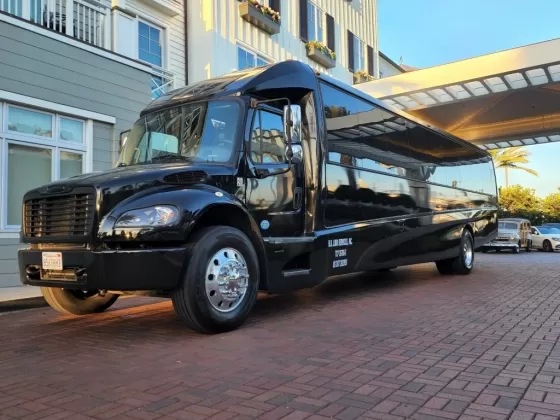Issue of smogging the buses every 6 months in California

Author: Moshe Jonathan — Editor of Global Limos Sales and networking publications and online content.
The charter bus and shuttle bus operators in California might face operational challenges as they might have to get their buses over 26,000 GVWR smogged twice a year according to a new law passed by the State of California. The state notates that up to 50 percent of the pollution from mobile objects comes from trucks and buses. Most bus operators are concerned about the environment. However, they believe that their single bus keeps 20-50 vehicles off the road. Furthermore, the buses reduce accidents by keeping traffic under check. This can be challenging for the bus operators as it takes up their resources, with cost and time, having to smog buses twice per year.
This is what the state has to say: The California Air Resources Board (CARB) has officially approved a new regulation, known as the 'smog check', aimed at reducing emissions from medium- and heavy-duty trucks and buses. Even though making up only 3% of all vehicles on California roads, these larger vehicles — buses and trucks — are responsible for over 50% of nitrogen oxides and fine particle diesel pollution from mobile sources in the state.
This new regulation will apply to approximately 1 million trucks and buses operating in California and will require them to undergo inspections twice a year to ensure their emissions control systems are functioning efficiently as the vehicles age. The expected result of this program, by 2037, is a reduction of 82 tons per day of NOx and fine particle diesel pollution. Additionally, CARB has also mandated that trucks with on-board diagnostics will need to undergo testing four times a year, phased in gradually over time. According to CARB Chair Liane Randolph, this program is the first of its kind and will effectively prevent unhealthy pollutants from being emitted from trucks and buses for the duration of their lifespan, delivering cleaner air to impacted communities near ports, freeways, and warehouses. Not only will this program have a significant positive impact on air quality, it is also projected to bring in $75 billion in health benefits and prevent 7,500 air-quality related deaths and 6,000 hospitalizations and emergency room visits from 2023 to 2050. These benefits far outweigh the estimated cost of the program, which is $4 billion. The program has been designed to make compliance easy for businesses and vehicle owners, as well as to prevent highly polluting trucks and buses from being registered and to ensure that malfunctioning emissions control equipment is promptly repaired. This new program, which is in line with SB 210 introduced by Senator and ex-officio Board member Connie Leyva in 2019, will replace the current periodic smoke inspections and also include independent owner/operators who were previously exempt. Senator Leyva expressed excitement about the implementation of this program, stating that it will lead to the largest reduction in NOx emissions since the adoption of the Truck and Bus Regulations in 2008. She emphasized the importance of subjecting big diesel trucks to smog check testing, similar to passenger vehicles, in order to continue improving air quality and public health in California. The Heavy-Duty Inspection and Maintenance program will involve a statewide network of roadside emission monitors, starting in the San Joaquin Valley and South Coast and expanding to other areas over time. It will also require periodic testing and submission of data to CARB for vehicles with a GVWR greater than 14,000 pounds operating in California. Similar to light-duty vehicles, these heavier vehicles will also need to pass an inspection in order to be registered in California, but unlike light-duty smog checks, they will not have to visit a physical testing location. Heavy-duty vehicle owners will be able to complete the required test remotely, using telematics systems, which can automatically draw emissions control performance data from the vehicle's internal computer. For older heavy-duty vehicles that do not have on-board diagnostic systems, opacity testing will continue to be required twice a year, with the addition of a visual testing component. In addition to the new testing requirements, the Heavy-Duty Vehicle Inspection Program will also conduct random inspections at border crossings, California Highway Patrol weigh stations, fleet facilities, and other roadside locations. The main objective of CARB is to reduce air pollution in order to protect public health, welfare, and ecological resources, while also considering the impact on the economy. As the lead agency for climate change programs, CARB oversees all air pollution control efforts in California to achieve and maintain health-based air quality standards.
The text should be paraphrased to eliminate plagiarism while maintaining the structure, context, and meaning. The markdown formatting must also be preserved.

